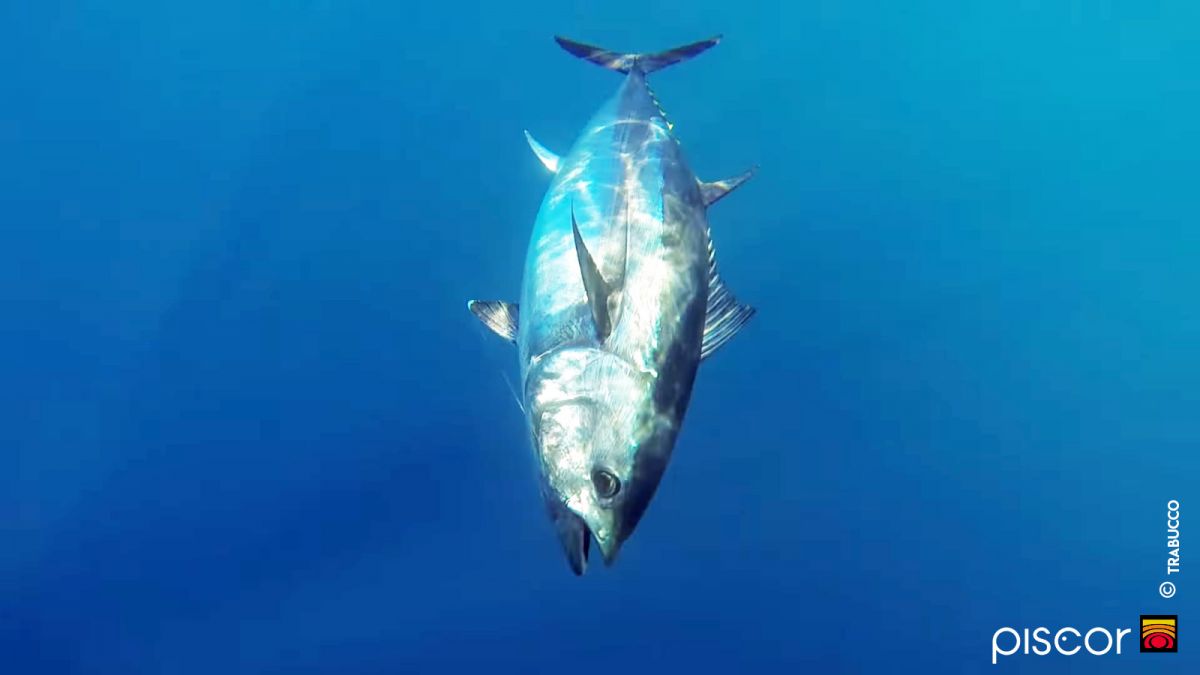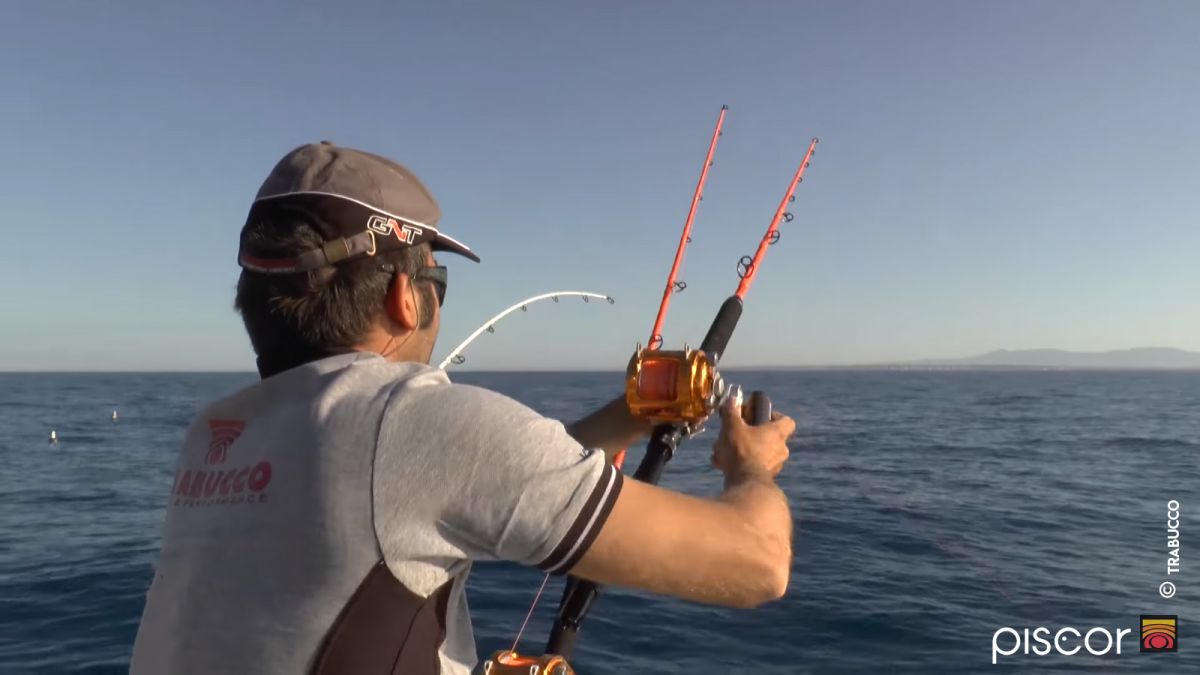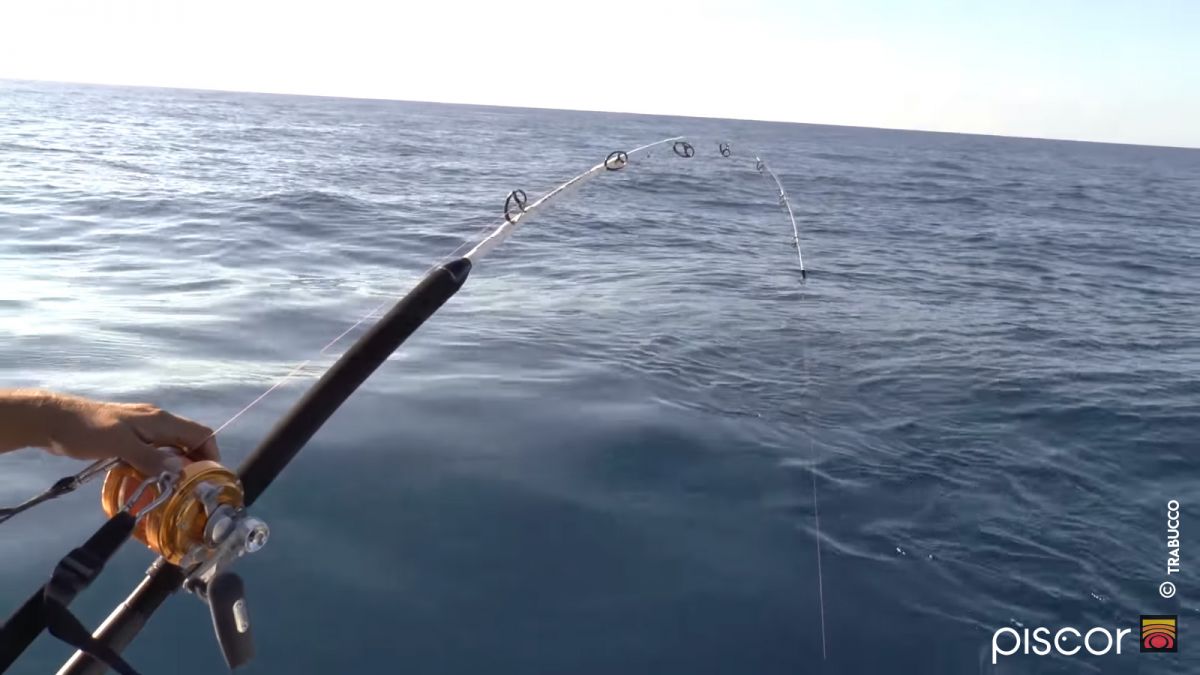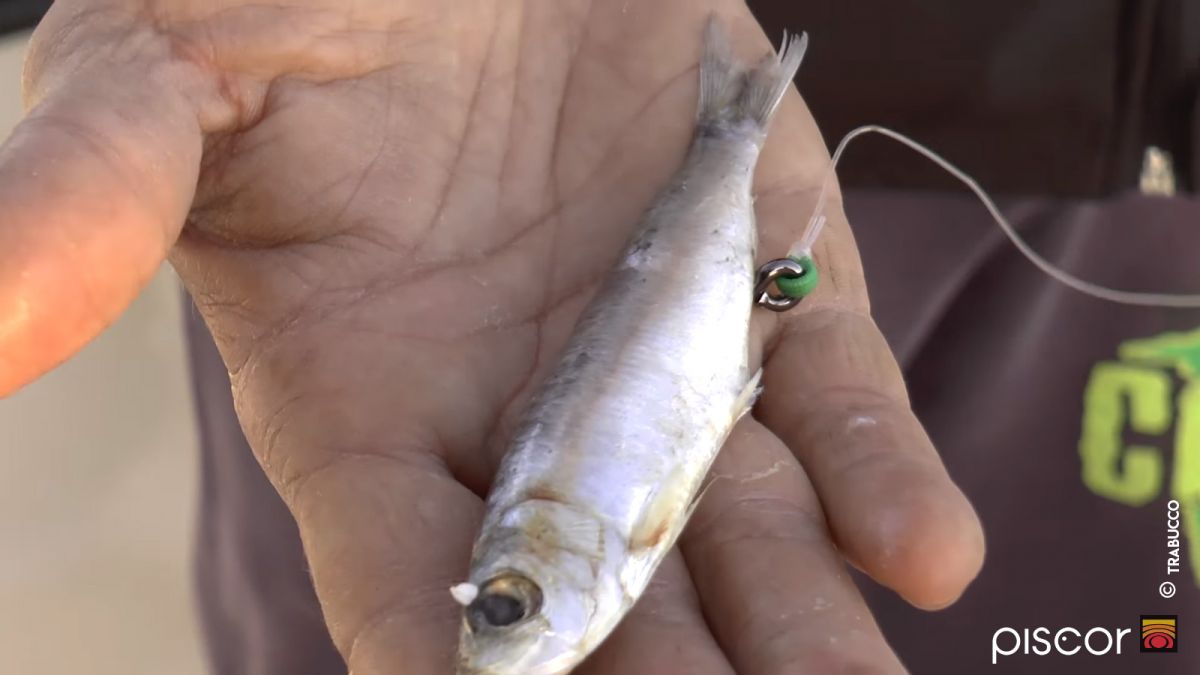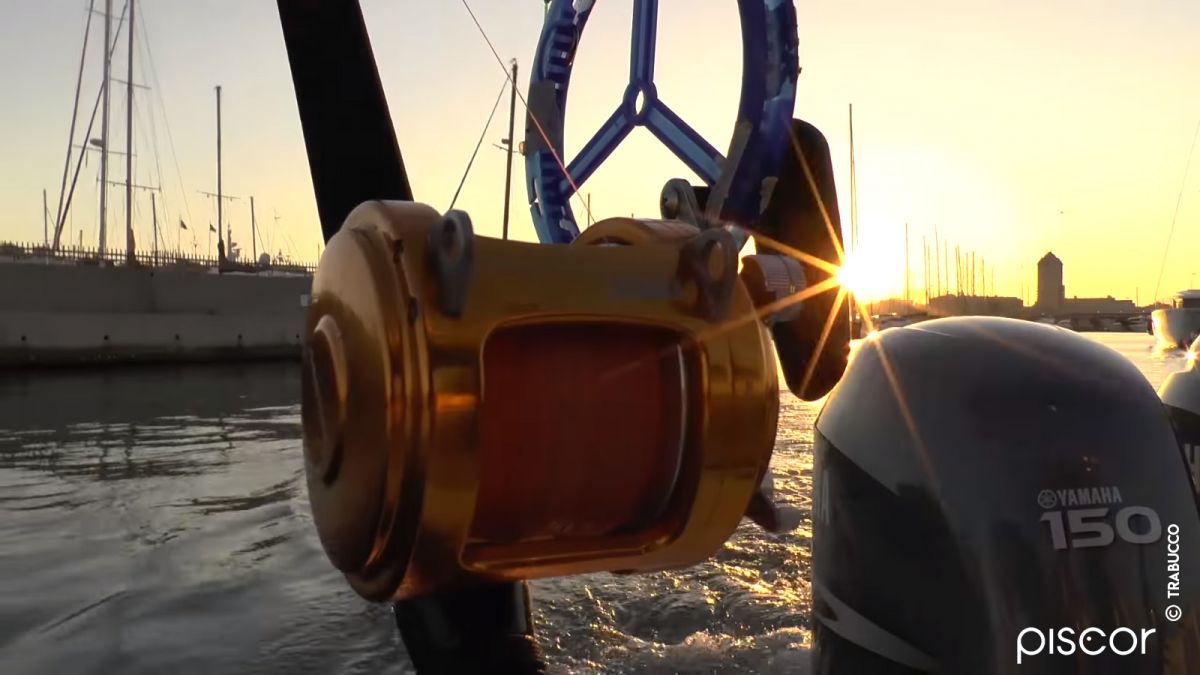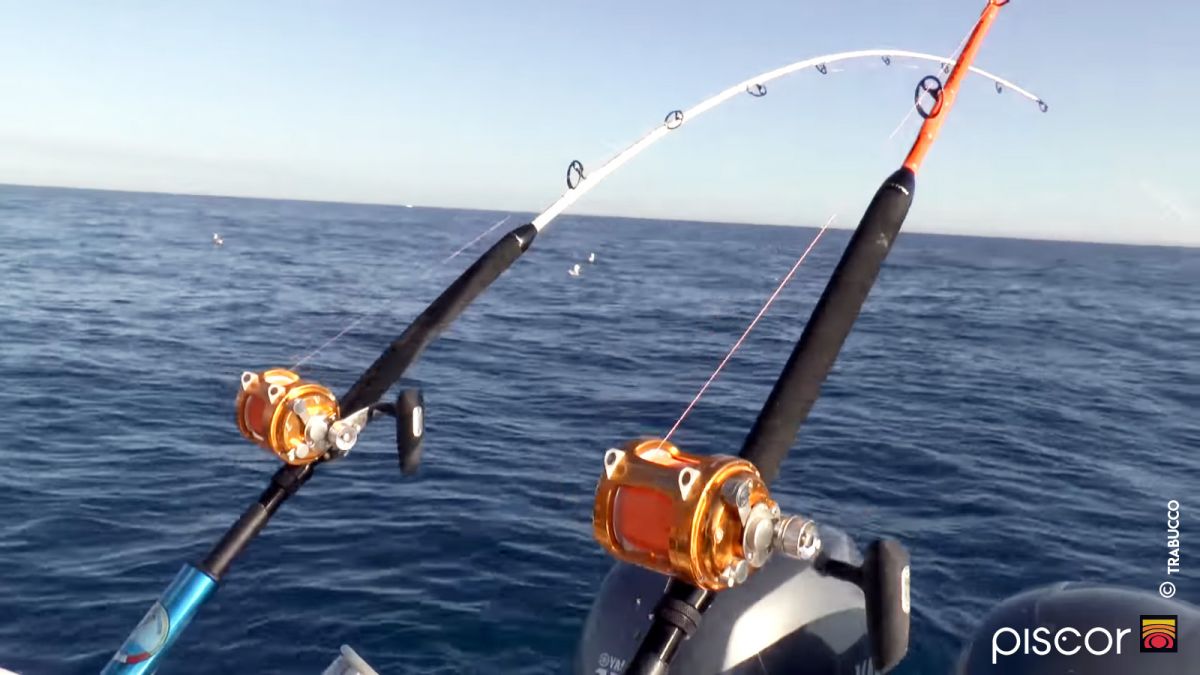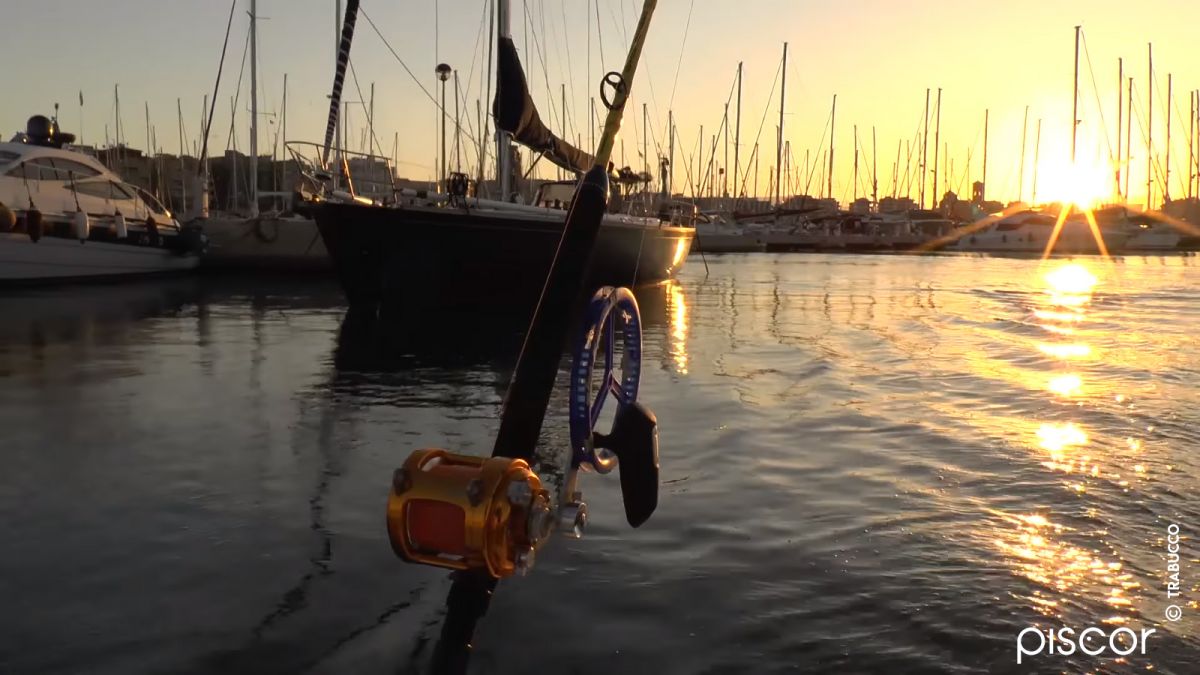A robust, fusiform and slightly compressed body, the Atlantic Bluefin Tuna is a fish of remarkable size, which can exceed the 50 years of life and reach the 700 kg for more than 3 metres of length.
The mouth is not very wide and has a single set of small conical teeth, also present on the internal bones of the palate. The colouration is dark blue on the back, silver-grey on the sides.
Tuna prefers temperate and subtropical waters and is sensitive to changes in temperature and salinity; it is a pelagic species that lives in the open sea, at depths even greater than 500 m, but approaches the coast in hot seasons, and alternates periods when it lives in herds and periods of relative isolation.
Drifting Fishing
This is the most widely used technique for tuna fishing, and is carried out by baiting from the boat, drifting or anchored, with the use of only sardines.
The so-called "swipe", or preliminary baiting, consists of throwing a certain amount of broken sardines into the water, while the boat goes upstream. The boat is then stopped and a sardine is thrown into the water one at a time, alternating some whole sardines with many shredded ones.
At least three rods chosen according to the combat system you want to use (with the combat chair or stand up system), different in length, action and foot shape, are required.
The power must be chosen according to the tonnage of the probable prey, from 30lb for herd tuna, up to 50-80 for giant tuna.
Reels suitable for power to the rods, must be solid and have a good capacity, able to offer a reserve of monofilament even in the most difficult situations.
The terminals are made of nylon, preferably fluorocarbon, with an breaking strength of 100 to 200 lb depending on the size of the prey. The hook also varies between sizes 7/0 and 10/0 in steel and perfectly sharpened.
For the trigger the most used system is to put on the hook a single sardine mounted on the belly up, because in this way it goes down to the bottom assuming the same attitude of the free ones used as groundbait.
Trolling with Lures
It is a technique used for fishing for tuna in flocks of 20 to 50 kg. The presence of fish is indicated primarily by the seagulls, sometimes looking for prey, or by the patches of sardine oil clearly visible because the oil in the sea leaves a homogeneous and clear stain.
The depth sounder is a valuable aid, indicating precisely at what depth and where the schools of fish, the eyelashes, the shallows and the bathymetric are located.
For trolling with artificial bait, we generally use minnow with a pronounced paddle, and therefore sinking, or artificial ones that swim on the surface, like the kona head, trolling at a speed between 6 and 12 knots.
If the sea allows it, it is possible to lower some teasers, a series of meatballs mounted in a line without hook, which act as a reminder for the predators. If the sea is rough, it is possible to use artificial attractors, equipped with mobile balls inside, to be used on shorter rods.

